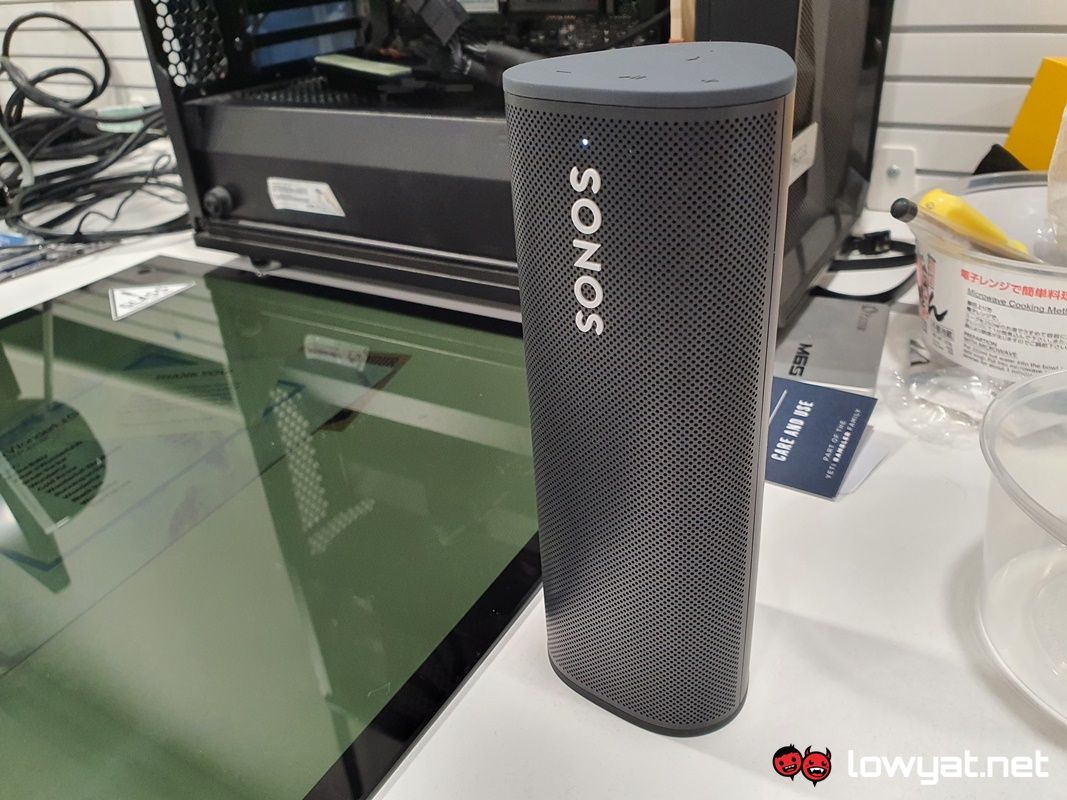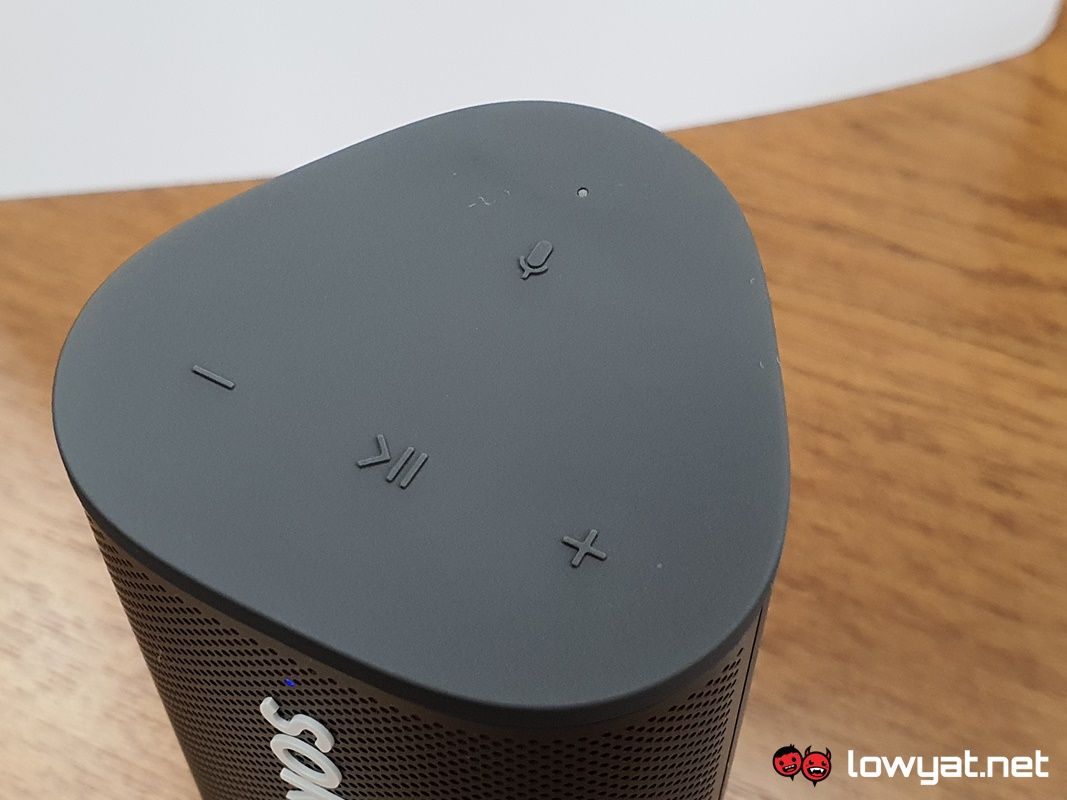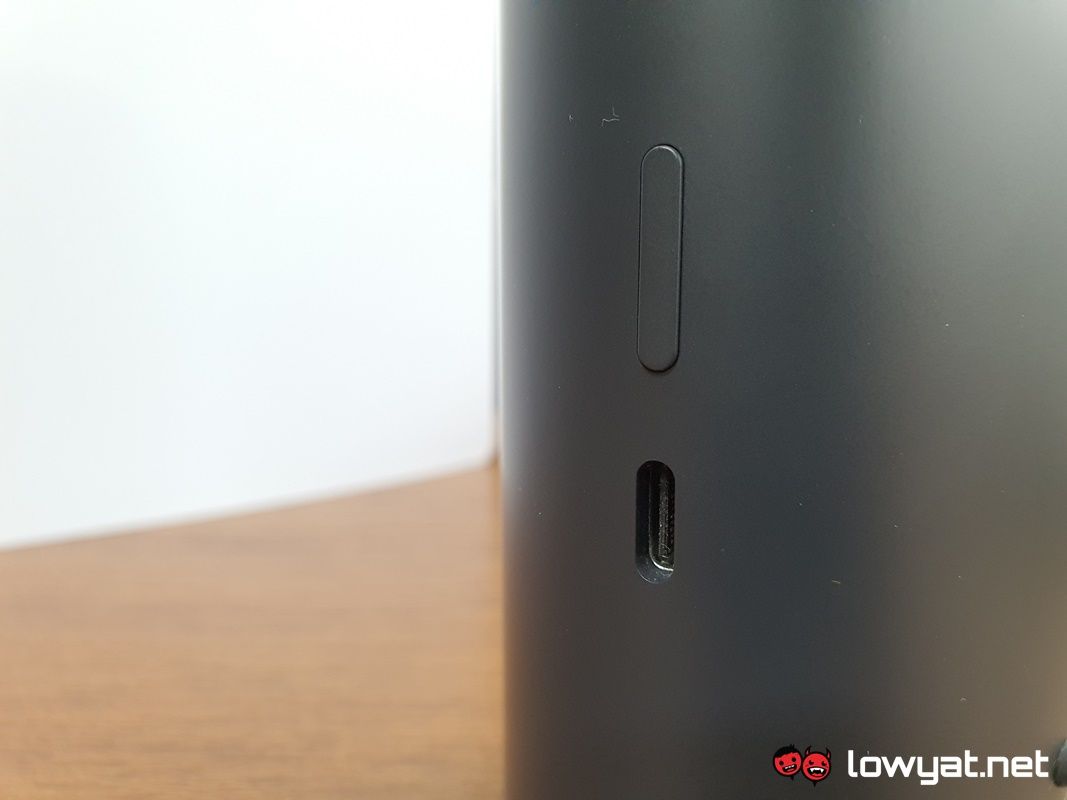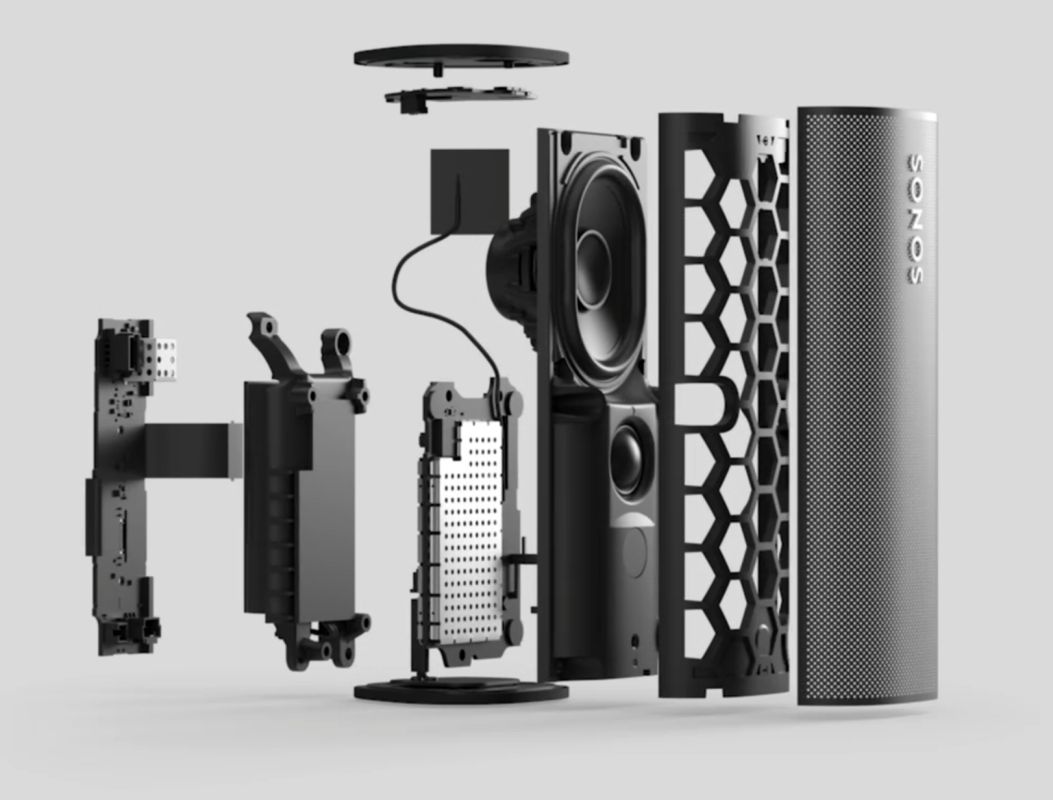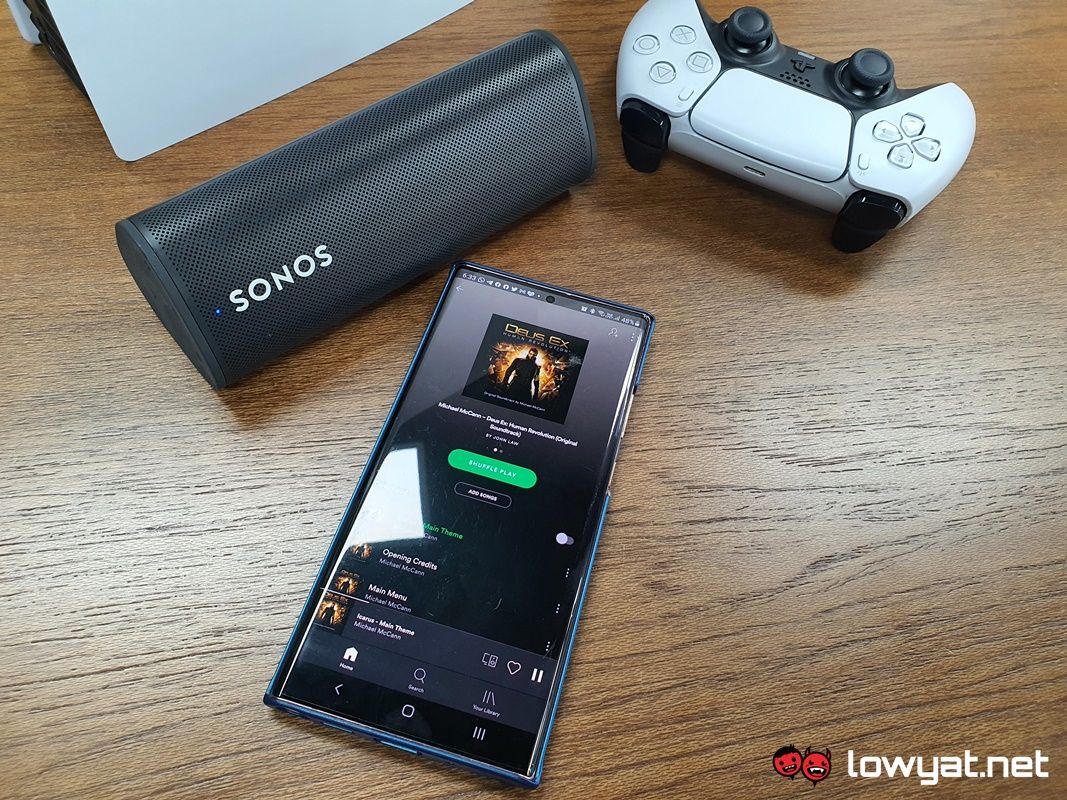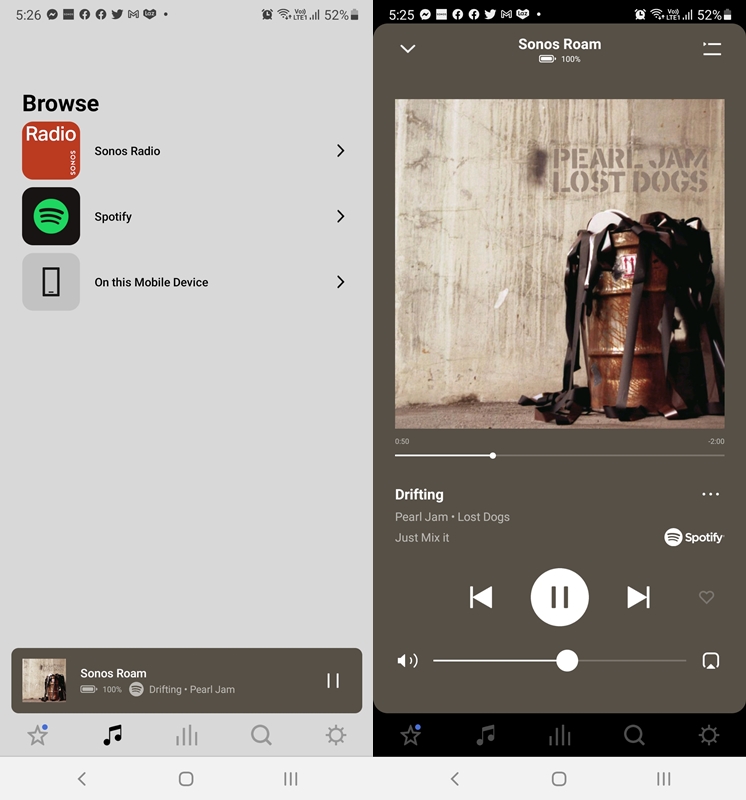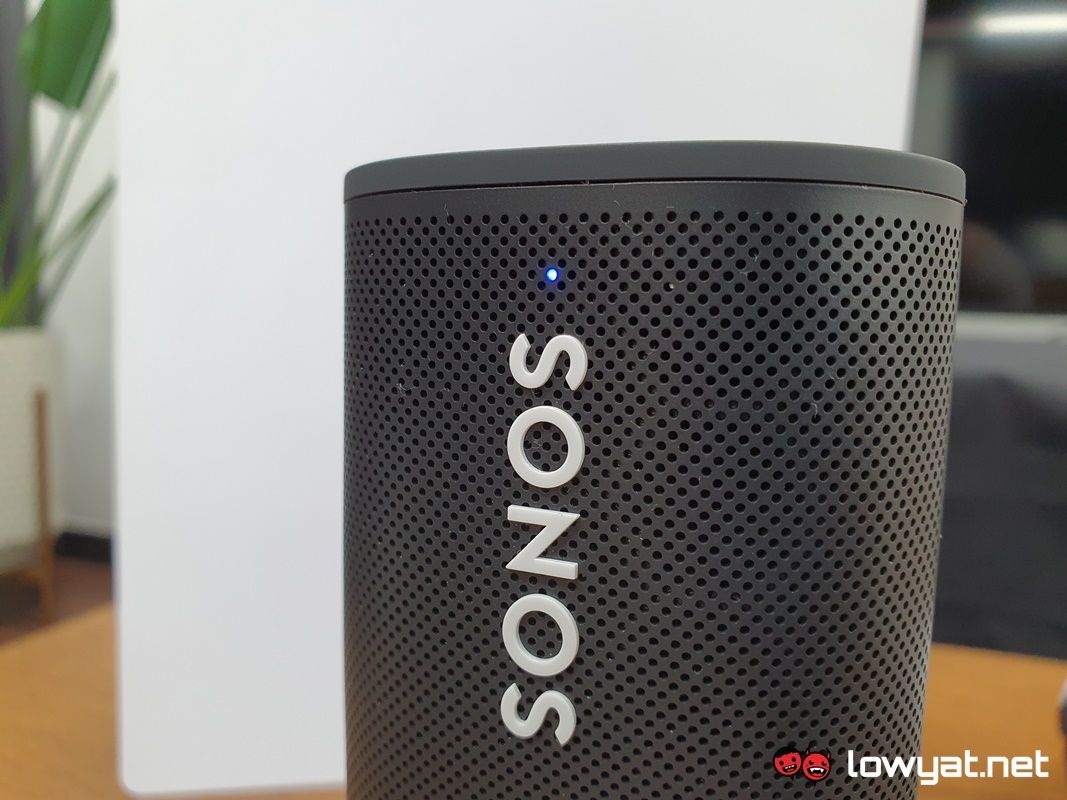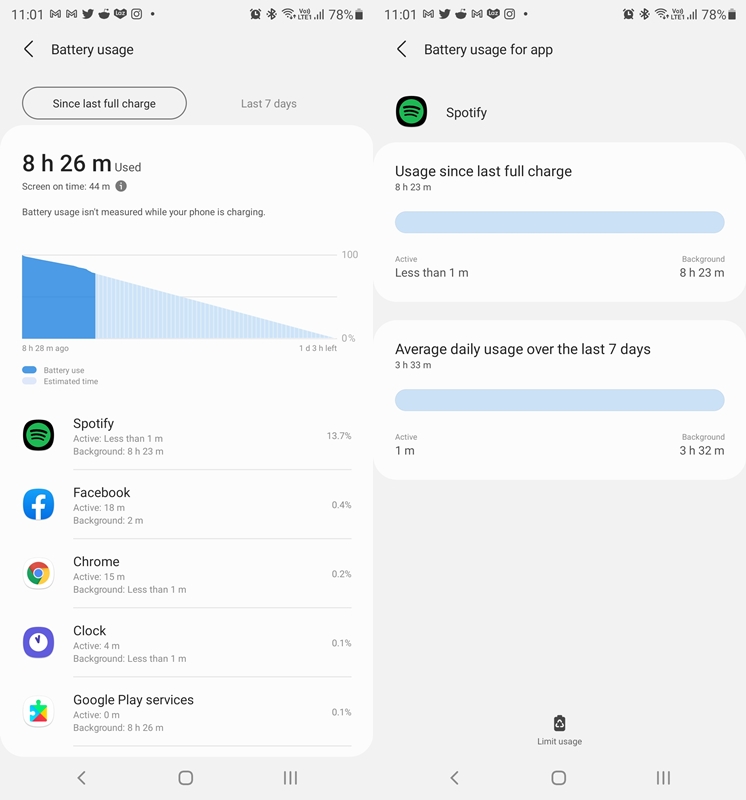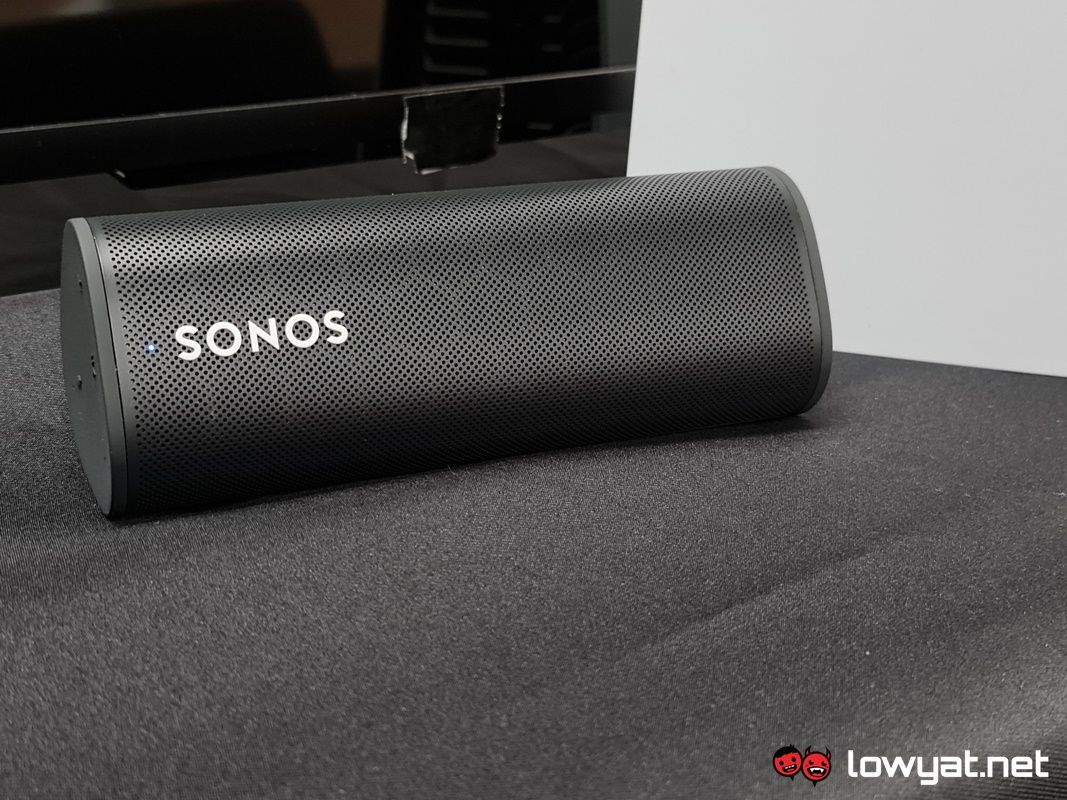Of course, one major difference between the two is that the Roam is smaller, lighter, and quite obviously a lot easier to carry. The real question is: does it retain all of the audio niceties Sonos is renowned for or has the brand been forced to make some cuts in its quality?
What Is It?
The Sonos Roam is a portable speaker that is significantly more compact than the Move in size and in weight. Again, like the Move, the Roam continues the brand’s choice of design with its semi-cylindrical design, albeit slightly longer. The minimalist aesthetics continues with the controls and voice assistant buttons integrated into the left side – or its top, depending on the orientation you have propped – of the speaker, while the power button and USB-C charging port are located at the back.
Speaking of charging, the Roam also supports wireless charging at its base and it does have its own charging pad, but Sonos has opted to sell the accessory separately. Oh, and the speaker is waterproof too, with an IP67 rating.
Underneath the speaker grille, the Roam is fitted with a 16mm tweeter and a fairly large-sized woofer, while two LEDs installed at both ends of the speaker serve as indicators for its connectivity and battery level. Specifically, the top LED glows white when connected via Wi-Fi, and blue when Bluetooth is activated.
Is It Any Good?
As with most portable speakers, the Roam is relatively easy to lug around, thanks in no small part to its cylindrical shape. On top of that, getting set up, either through Wi-Fi or Bluetooth, is an effortless affair, with instructions for the former option relayed through the brand’s app. As for the Roam’s performance out of the box, its audio quality is what I have come to expect of a Sonos speaker; there is an emphasis on highs and mids, with both pitches sounding bright and clear, with zero breaking at maximum volume. While it can still be felt, lows clearly take a back seat with the speaker, which isn’t surprising, considering the size of the speaker.
The Roam also supports Sonos’ TruePlay technology, giving it the ability to auto-tune itself within its environment. However, access to the feature is currently limited to iOS, which I will briefly explain in the next section.
The Bad Stuff. Tell Me.
My main issue with the Roam is the fact that, after all this while, Sonos still requires that you log on to its titular app in order to play any music while having it connected to the local Wi-Fi. To that end, I am grateful that the company gave the speaker Bluetooth 5.0 connectivity. As for TruePlay, the feature is, sadly, limited and only accessible via an iPhone. At this point in time, the feature still isn’t available for Android, and it’s a sticking point that has many ardent followers of Sonos banging on its front door. Sadly, the brand told us that it is working on making the feature available for the ecosystem.
Then there’s its battery life. On paper, Sonos says the Roam can go for up to 10 hours on a single charge. In my experience, that was barely the case; at best, the legs of the speaker’s battery ranged between six and eight hours. Mind you, this average battery life was uniform on both Wi-Fi and Bluetooth. The other drawback to owning the Roam? Off the shelf, it retails for RM1099, which is a pretty steep price for a portable speaker. Especially for an audio accessory designed to be lugged around and used outdoors.
Should I Buy It?
At RM1099, the Sonos Roam isn’t an easy sell. As I said, at a fraction of the price, I can list off a laundry list of other portable speakers you could get. However, the aural experience from those speakers may not be as pleasant as with the Roam. While it was designed for portability and the outdoors, the Sonos branding means that the Roam doesn’t skimp on audio quality or its delivery. If anything, the Roam is a great vehicle for a handful of genres – pop and jazz, mostly – although, to reiterate, the bass delivery could use a bit of work. That said, the Sonos Roam is still quite possibly one of the best portable speakers I have ever had the pleasure of experiencing, to-date.
